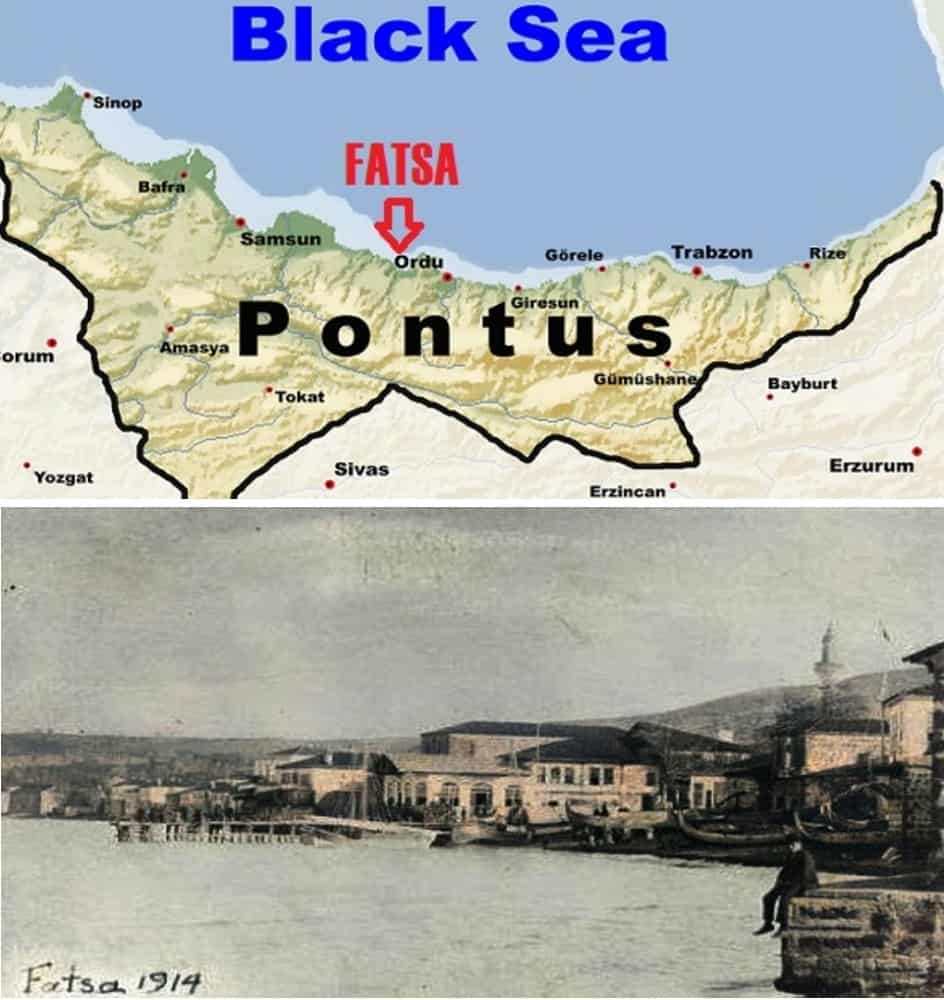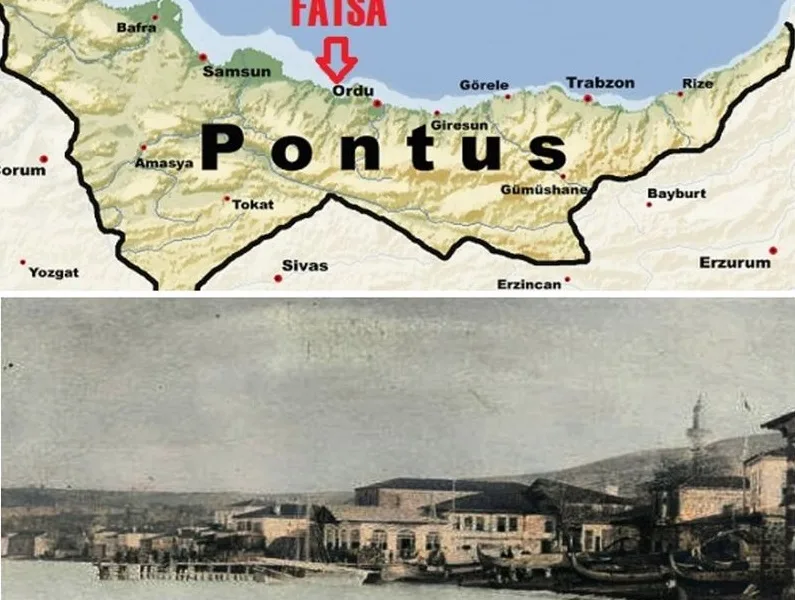The Black Sea town of Fatsa (Φάτσα), situated between Oinoi (Οἰνόη, Turkish: Ünye) and Kotyora (Κοτύωρα, Turkish: Ordu), was known in ancient times as Fadisani (or Fadissa), a name which the locals retained until more recent times.
In the early part of the 20th century, Fatsa had a population of 3,000, of which approximately 1,000 were Turks, and the remainder were Greeks, both Orthodox and Evangelists. There was also a small number of Armenians living in the region.
The Greeks of Fatsa belonged to the Diocese of Neocaesarea and Ineos while the Evangelists belonged to the Diocese of Merzifon.
Most Muslims living in in the town were from Sourmena (Σούρμενα, Turkish: Sürmene), Riza (Ρίζα, Turkish: Rize) and Georgia, while the Greeks of Fatsa moved there from Argyroupolis (Αργυρούπολη, Turkish: Gümüşhane), Oinoi, Kotyora and Sourmena.
The Greeks resided in the two Greek precincts; Rum Machlesi and Yiali Yeni Rum Machlesi in the south-west part of the town. The Greeks of Rum Machlesi supported the operation of an 8-grade boys' and girls' school and a 6-grade school for the Evangelical community.
The majority of the Greeks of Fatsa were involved with merchant trades and shipping. After the population exchange of 1923, the Greeks settled primarily in the region of Pierias in Greece.
The oldest recorded name of the town is Polemonion (Ancient Greek: Πολεμώνιον), after Polemon I of Pontus. A derivative of Polemonion, i.e. Bolaman, is the modern name of the river passing through Fatsa (the river is the ancient Sidenus).

The Greek villages of the precinct:
Φάτσα - Fatsa
Αλάκερις - Alakeris
Γιαϊλατζίκ - Yaylatsik
Καγιάκιοϊ - Kayakioy
Κιζιλότ - Kizilot
Κιόλκιοϊ - Kiolkioy
Μερί - Meri
Ντερέκιοϊ - Derekioy
Οσμάνκιοϊ - Osmankioy
Source https://www.pontosworld.com/index.php/pontus/settlements/179-fatsa
READ MORE: Timeline of the Greek Genocide of Pontus (1914-1923)

